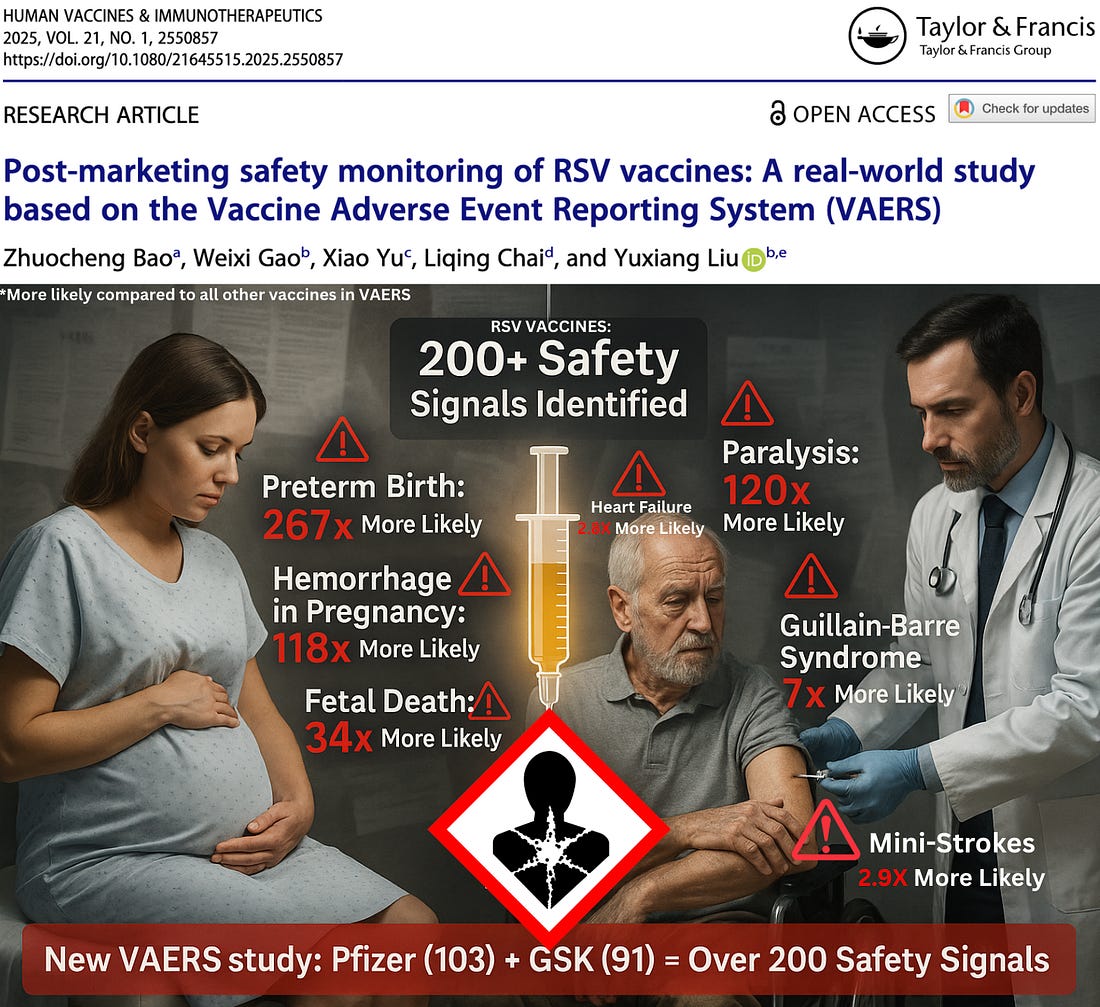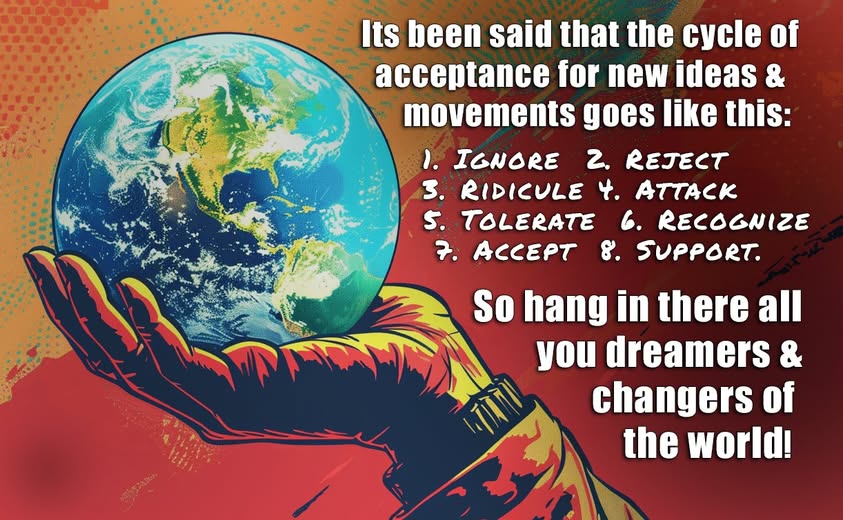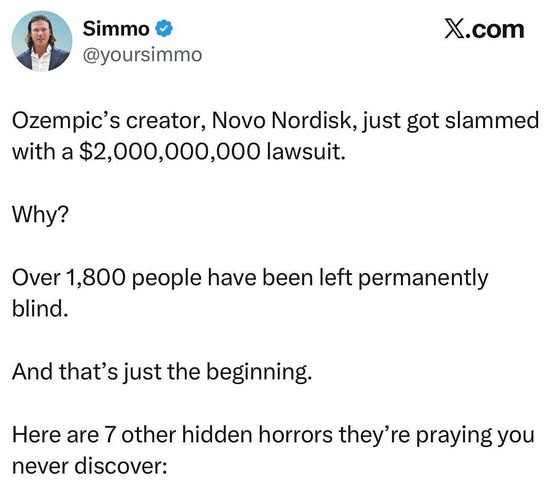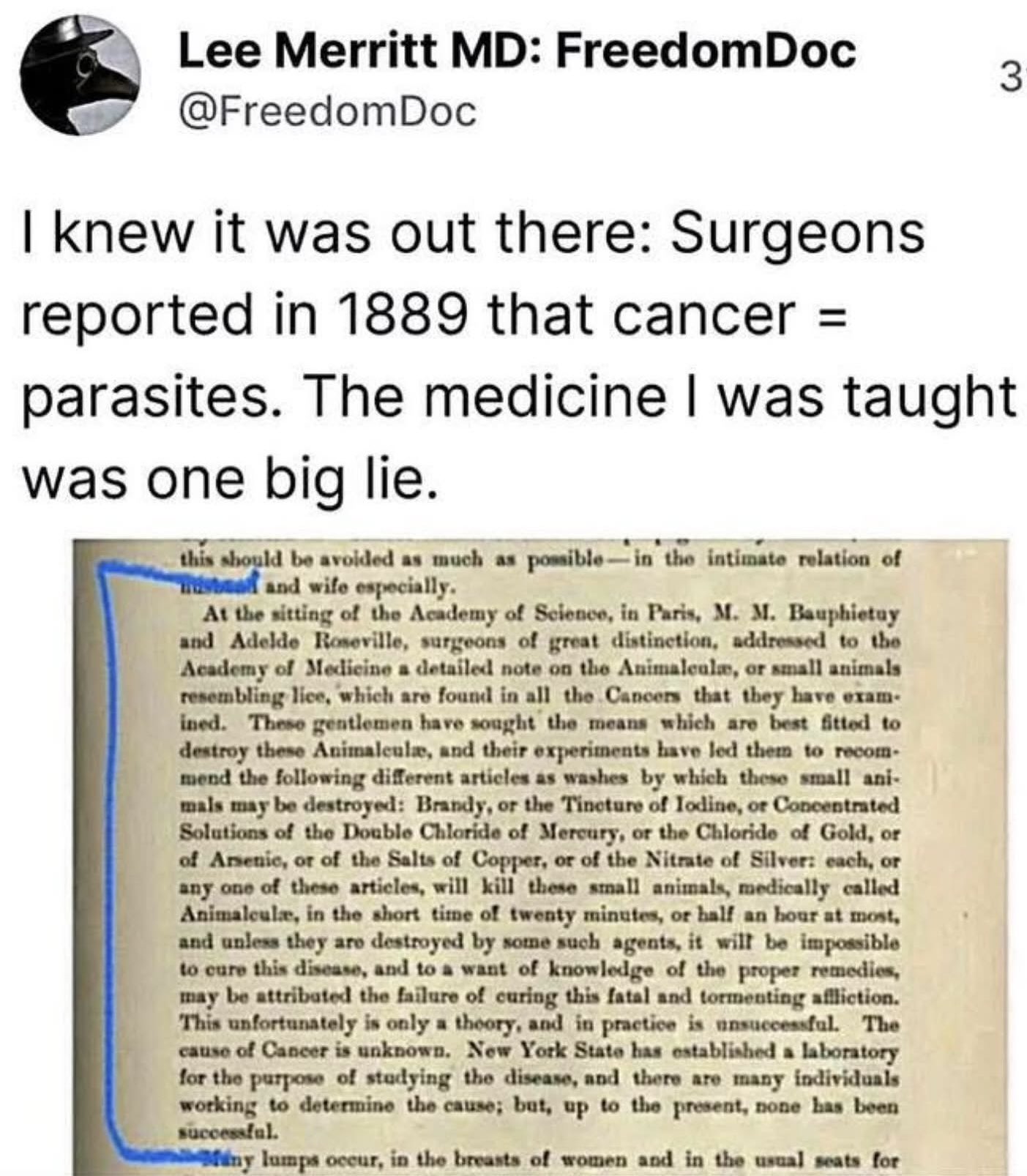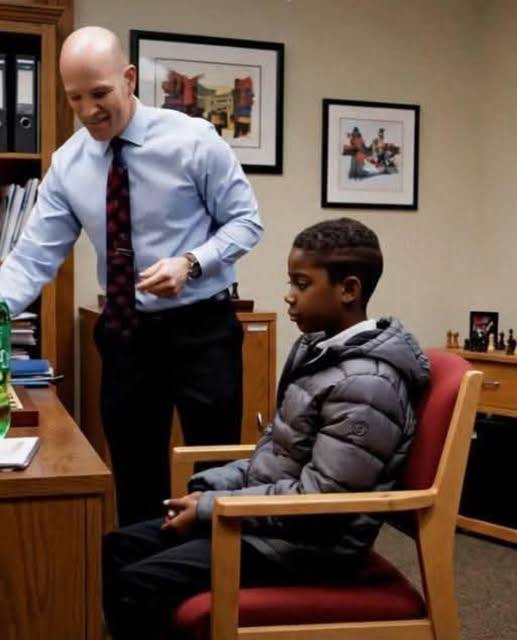
The call came during second period—calm, but with an edge. “Can you come down to Room 12? One of the eighth graders is refusing to remove his cap.”
When I got to my office, there he was. Jaden. Usually soft-spoken, respectful. But today… he sat curled in the chair like he wanted to vanish. Cap pulled low. He muttered so quietly I almost missed it: “They laughed at me.”
He told me kids in the cafeteria had made fun of his botched haircut. He slowly lifted his cap. His hair was butchered—lines jagged, patches bald. I could’ve written him up. But rules aren’t always what kids need.
I stood and walked over to my cabinet and pulled out my old barber kit. Before I became a principal, I cut hair to pay for college. “Let me help, yeah?” I asked.
He nodded. I draped a towel over his shoulders and started shaping him up. As the first smooth line buzzed into place, he exhaled—like someone finally let him breathe again. And then he started talking. About how laughter hurts worse when it follows you all the way home.
As I adjusted the angle for a final fade, I noticed something. Scars. Tiny, raised lines etched into the back of his scalp. I froze for half a second. “These… from something recent?” I asked softly.
He didn’t answer right away. Then he whispered: “That’s where they hit me. Last year. When we were still at our old place.”
I turned the clippers off. “Who’s ‘they’?” I asked.
He didn’t look at me. And then he said something that made my blood run cold, “My mom’s ex-boyfriend,” he whispered, his voice so small it was almost swallowed by the quiet hum of the office. “He… he used to get mad. At her. At me. He’d throw things. The last time, it was a coffee mug.”
The clippers in my hand suddenly felt impossibly heavy. The botched haircut, the hat, the fear—it wasn’t just about shame. It was about hiding. It was about survival.
“Jaden,” I said, my voice steady despite the rage coiling in my gut. “Is he still around? Is your mom okay?”
He finally looked at me in the mirror, his eyes wide and haunted. “We left. A few months ago. We have a new apartment now. It’s supposed to be better.” He paused. “But he found us.”
My blood ran cold. “When, Jaden?”
“Last night,” he choked out, a single tear tracing a path through the tiny clipped hairs on his cheek. “He was waiting outside. He told my mom he was sorry. He said he’d changed. She… she let him in.”
The haircut. It wasn’t his cousin. It was him. A clumsy, cruel attempt at an apology, or worse, a mark of ownership.
I put the clippers down. The haircut was over. My real job was just beginning.
“Okay,” I said, my voice leaving no room for argument. I put my hands on his shoulders, turning him to face me. “Here is what’s going to happen. You are not going home on that bus today. You are going to stay right here with me. We’re going to call your mom, and we’re going to call some people who can help. People who make sure men like that go away and never come back. Do you understand?”
He just nodded, a wave of relief so profound it seemed to uncurl his hunched shoulders.
For the next two hours, my office became a command center. I called Child Protective Services. I called the police. I spoke to Jaden’s mother, who sobbed on the phone, admitting she was terrified but didn’t know what to do.
When she arrived at the school, she wasn’t alone. A police officer and a social worker were with her. They had a plan. An emergency protective order. A new place to go, a shelter with security, where he couldn’t find them.
As Jaden got ready to leave with his mom, he stopped at my office door. His hair was perfect—a sharp, clean fade. But more than that, his eyes were clear. The fear was still there, but it wasn’t hiding anymore.
“Thank you,” he whispered.
“You’re a good kid, Jaden,” I said, my voice thick. “You deserve to feel safe.”
He reached up and touched the back of his head, where the scars were now hidden beneath the clean lines of his new haircut. “You know,” he said, a small, hesitant smile on his face. “You’re a pretty good barber.”
I just smiled back. “I’m a better principal.”
That day, I broke a school rule. But I had followed a much more important one. I had listened. I had seen a child who was hiding, and instead of punishing him for the hat, I had asked him why he needed it. Sometimes, the most important thing a kid needs isn’t a lesson. It’s a safe harbor. And a decent haircut.
Credit to the respective owner




